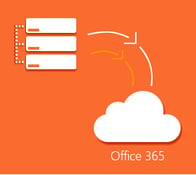Office 365 Migration — Exploring Tenant to Tenant Migrations
Since June 2011, Office 365 has been the destination for many Exchange, Skype for Business and...


I imagine that about a week after the first customer was on-boarded into Office 365 they decided that they needed to do a tenant-to-tenant migration. While that is probably not how it went, I suspect I am not too far-off reality with that one.
There are many reasons why an Office 365 customer may need to move some or all users to a new Office 365 tenant. In my experience the most common reason organizations need to do tenant to tenant migrations is because of mergers, acquisitions, or divestitures. These are complicated migrations for a whole bunch of reasons that have nothing to do with the technology of Office 365. I am not a corporate lawyer, so I am not here to address all the legal and political challenges of these migrations. What I can do is talk about the new tools that Microsoft is making available within Office 365 to help with these migrations.
Microsoft first talked about mailbox tenant to tenant migration tools at Ignite 2017. The tool is now available as a public preview. Great progress, but there is a long way to go.
About a month ago, Microsoft announced that their tool for mailbox migrations between tenants is available in public preview.
First thing I want to clarify is what “public preview” means. In short, it means that Microsoft believes the tool is ready for customers to use, but they are still testing out items before it's generally available. They have enough confidence in the tool to make it available, but not enough confidence to say they will support any issues you run into. Please remember that this tool is not ready for prime time yet, and your decision to use it in its current state with production data may leave you in a very bad place.
When this mailbox tenant to tenant migration tool makes it to General Availability status, I am sure Microsoft will have all the bugs ironed out, giving us a free tool for these mailbox moves. I am not going to put a “guide” to how to use this tool in this blog post because the tool itself is not finalized yet, so my guide could easily be outdated very quickly. What is not likely to change is that this built-in tenant to tenant mailbox migration tool does require using Azure Key Vault. Microsoft does provide scripts to make this setup easier, so it should not be too much of a concern for those with no Key Vault experience.
Second thing we need to cover is that this tool only supports mailbox moves. As of this writing, there is no Microsoft tool available to move any data other than mailboxes. Microsoft is also working on a tool for SharePoint and OneDrive for business tenant to tenant migrations, but that is still in private preview right now. You can request to join the private preview HERE, but of course the SharePoint and OneDrive for Business tool is not even up to the point of public preview.
Neither of those tools will do anything about moving Teams, Yammer, Planner, or Power Automate data. They will not move your compliance settings, sharing policies, retention policies, licenses, or a whole host of other data that you are most likely going to want in your new tenant. These are all very complicated problems to solve when doing a tenant-to-tenant migration.
While I applauded Microsoft for working on these tools to make tenant to tenant migrations easier and less expensive for their customers, as of now these Microsoft migration tools are not ready for use with production data. I would have to recommend you look elsewhere if you have a tenant-to-tenant migration that needs to be done in the near future.
While that is a good question, I am going to give you the standard consultant answer of “it depends.”
There are a whole host of 3rd party tools that can be used for a tenant-to-tenant migration. Instead of recommending a specific tool, I am going to recommend that an organizations should make sure to clearly define the requirements for it’s specific tenant to tenant migration then do the research to find the tool that best fits your organization’s needs.
The primary concern with a merger triggered migration is usually the timeline. These migrations often have deadlines that are dictated by the merger process and not the technical needs of the organization.
After the timeline for your migration is set, you need to figure out what data is going to be migrated. With any Office 365 migration there are potentially lots of different data types to migrate. User accounts, permissions, mailboxes, SharePoint sites, OneDrive data, Teams, Planner, Flow, Dynamics 365, Yammer, and others. Depending on the timeline, your organization may have to make choices about what data can be moved within the time frame defined.
The third thing I find it important to think about in these migrations is how the effected organizations will work post migration. Will there need to be a shared vanity domain? Will users need to collaborate across tenants? Will migrated users still need to show in the Global Address List? All these decisions can have a significant impact on what tool or tools will be best to help you complete your migration.
Microsoft is working to make tenant to tenant migrations easier within Office 365, but the tools they offer are not ready for production use yet. When the tools Microsoft is currently developing are ready for GA, they still will not be enough to migrate all the data within an Office 365 tenant.
If your organization is going to be doing a tenant-to-tenant migration soon, you will need to choose a 3rd party migration tool to get that done. Which tool best fits your organizations needs will depend greatly on the specific requirements of your migration.
While ENow is not a migration company, our software does enable IT Pros to assess their organizations readiness for Office 365 and accelerate their migration. In particular, ENow's solution helps organizations verify appropriate network connectivity, validate hybrid components (ADFS & AAD Connect) are setup correctly, and that mail routing is functioning.
For more information on how ENow can ease your transition to Office 365, please chat with the bot in the bottom right corner.

Nathan is a five time former Microsoft MVP and he specializes in Exchange, Microsoft 365, Active Directory, and cloud identity and security.


Since June 2011, Office 365 has been the destination for many Exchange, Skype for Business and...


Two organizations each have Microsoft 365 tenants and they want to work together on several...